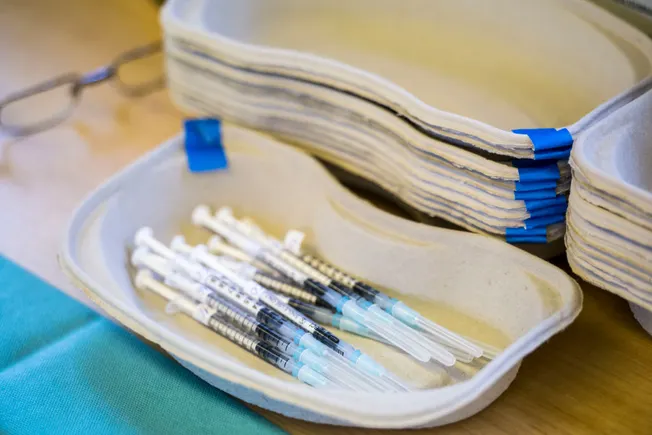Moderna, trailing rivals, checks its RSV shot expectations


Months after winning approval of a new vaccine for respiratory syncytial virus, Moderna is acknowledging that wresting market share from its two competitors may be more difficult than it thought.
Moderna’s RSV shot secured Food and Drug Administration clearance for older adults in late May, joining vaccines from GSK and Pfizer on the U.S. market. But uptake of Moderna’s product, called mResvia, has been slower than the biotechnology company anticipated.
“Maybe we were overly optimistic about our ability to compete in the first year of RSV,” said Moderna CFO Jamey Mock at an “R&D Day” conference held by the company Thursday. Looking ahead, Mock said, Moderna is being “more realistic” about the size of the RSV market and the share it anticipates holding.
Stéphane Bancel, Moderna’s CEO, cited difficulties in contracting, especially going against GSK and Pfizer, as well as the month or so it had to wait before obtaining usage recommendations from the Centers for Disease Control and Prevention.
“We were, I think, maybe naive or too optimistic about the start of the launch of RSV and I take full responsibility for it,” Bancel said.
GSK, which sells Arexvy, has dominated the RSV market since becoming the first to gain approval last year. But Pfizer and Moderna aim to establish their rival options and expand into younger age groups. Both companies plan to ask the FDA to clear their shots for use in adults aged 18 to 59 years, for instance.
In the meantime, though, Moderna again tweaked its financial guidance, forecasting on Thursday between $2.5 and $3 billion in 2025 sales and pushing out its expected break-even date by two years.
Moderna also disclosed cuts to research spending and the discontinuation of several pipeline projects. The biotech plans to reduce R&D spending by $1.1 billion annually by 2027. It’s cut five programs, including two cancer treatments, a heart failure therapy and vaccine candidates for endemic human coronavirus and RSV in infants.
“As we’ve gone through and done our semiannual prioritization process, these [programs] didn’t meet the bar for carrying forward,” said Stephen Hoge, Moderna’s president, during the conference.
Moderna is counting on expanding its respiratory disease business with a next-generation COVID-19 shot, as well as a combination influenza and COVID vaccine. A standalone flu vaccine, which Moderna will now test in a confirmatory efficacy study, would round out the company’s portfolio.
But the company expects that it will complete the majority of its planned respiratory R&D investment by 2026. Going forward, it intends to pour more resources into oncology while “pacing” investments in other vaccines and rare diseases, it told investors Thursday. It’s expecting to launch five new products by 2027.
A melanoma vaccine it’s been developing with Merck & Co. leads those efforts. Moderna also highlighted an experimental shot for cytomegalovirus that’s in late-stage testing and that some analysts believe to be a future blockbuster. A candidate for norovirus could also begin a Phase 3 trial shortly.
Still, pressure from investors is building. “Lofty financial expectations followed by guidance walk-backs” have caused shares to fall more than 40% since the start of August, wrote William Blair analyst Myles Minter. The FDA also appears unlikely to consider an accelerated approval for its Merck-partnered cancer shot, leaving a “long road” for the company to traverse, he wrote.
Leerink Partners analyst Mani Foroohar added that the cuts Moderna outlined aren’t enough to sway investor sentiment. More “are necessary to get the company back to sustainability,” Foroohar wrote on Friday.
This post has been syndicated from a third-party source. View the original article here.




